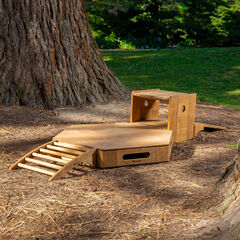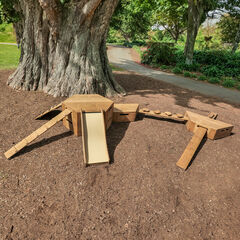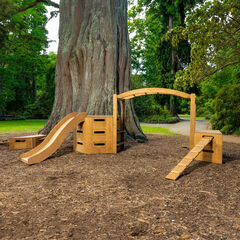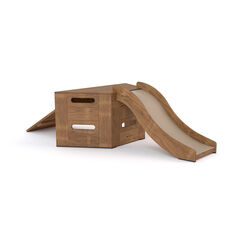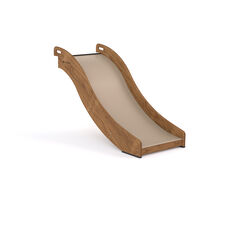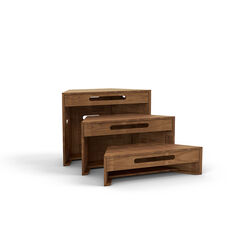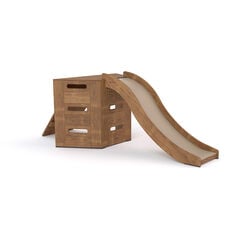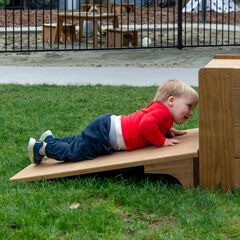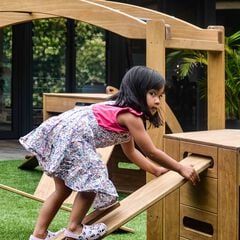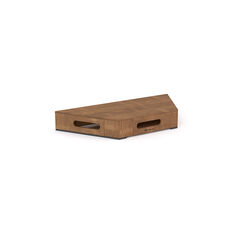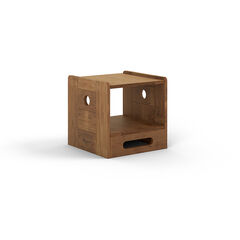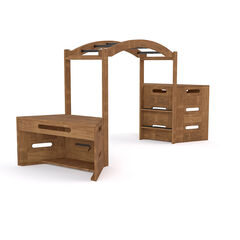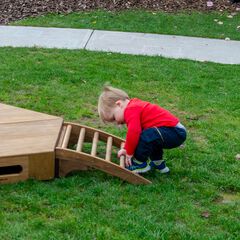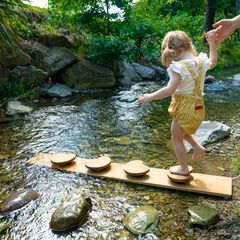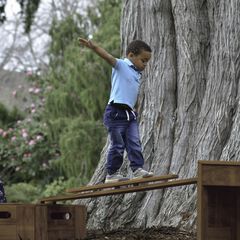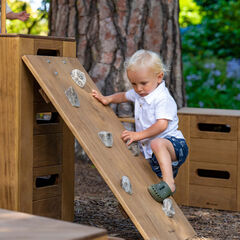Outdoor play is more than just a break from the indoors—it’s a powerful driver of physical development in the early years. When children are given the time, space, and tools to move in a variety ways, they develop not only strength and coordination, but also confidence, resilience, and independence.
So how can we create outdoor spaces that do more than just entertain? How do we make sure every child—regardless of age or stage—feels empowered to move in ways that challenge and excite them?
Before we consider the different ways in which we can support physical development outdoors, we will look at why movement is so important, especially in the early years.
Why Outdoor Movement Matters
From birth to five, children are constantly exploring what their bodies can do. When we observe children, we will have noticed toddlers pulling themselves up onto a low platform again and again, pre-schoolers testing how far they can jump, or groups of children collaborating to build a path using blocks and beams. These moments aren’t just child’s play—they’re the building blocks of physical confidence.
Outdoor movement is important as it supports physical development and other areas of learning such as:
- Gross motor skills like balance, coordination, and core strength
- Spatial awareness—understanding where the body is in space
- Grip strength and hand–eye coordination
- Social skills, from turn-taking to teamwork and communication
Most importantly, it builds independence. When children realise what their bodies are capable of, it builds resilience, endurance and a readiness for learning across all areas.
Now that we’ve looked at why movement matters so much, let’s look at some of the different ways in which we can create movement-rich environments that support physical development outdoors in meaningful, child-led ways.
Five Tips for Supporting Physical Development Outdoors
1. Offer Movement in All Directions
Think beyond “up and down.” Children benefit from opportunities to crawl through, step across, tiptoe along, slide under, and climb over. Varying levels and layouts help develop both coordination and confidence.
2. Let Children Take Charge of the Setup
Although staff may have to move some of the equipment for safety reasons, why not incorporate the children’s ideas and suggestions into the set up? With adult support and the relevant risk assessments carried out, children can help move different items into the space. Moving and arranging things in their environment isn’t just problem-solving—it’s physical development in action. Lifting, dragging, pushing, and pulling all build strength and control, especially when children are invested in the outcome.
3. Encourage Safe Risk-Taking
Have you got equipment or opportunities where children can practise safe risk-taking? Being able to assess risk is an important life skill. However, remember to consider the language you use in these situations. It’s tempting to jump in with “be careful!” when you see a child ready to leap from a platform. Support the children in your setting to assess their own limits. Using language such as, “That beam looks tricky—what could you do to make it safer?” is far more empowering than simply removing the challenge.
Want to read more about risk taking in the early years? If so why not read our blog, ‘Learning through risk – How to get started’.
4. Embrace Repetition
Sometimes children will repeat the same movement—crawling through the same tunnel 20 times or jumping off same platform over and over. This is not boredom or stale play—it’s mastery. Repetition helps children refine movement patterns and build confidence.
5. Plan for Progression
Offer adaptable resources that grow with children. What’s a crawling tunnel for one child might become a hiding spot or a bridge for another. A good outdoor space doesn’t need upgrading—it just needs reimagining.
Designing Spaces that Encourage Physical Development Outdoors
It’s easy to assume outdoor play means a fixed climbing frame and plenty of space to run. However, as mentioned above, rich physical development happens when the environment is flexible, open-ended, and responsive to children’s interests.
This where modular equipment such as the Outdorable range is invaluable. The Outdorable range is designed to support active and exploratory play. It includes:
- Platforms, ramps, and beams to support climbing, crawling, and balancing.
- Modular pieces that staff can easily lift, stack, and arrange to create obstacle courses. This means that you can meet the needs and interests of the children in your setting. Although the initial outlay can be more expensive, it is often more cost effective over time.
- Tunnels and different surfaces that challenge spatial awareness and build core strength.
What’s powerful about this kind of setup and equipment is that children (with support of the adults) become co-designers of their environment. It gives them agency—and that alone increases the quality of movement and depth of engagement.
In Action
At Sunshine Corner Nursery, the team were looking for ways to make their outdoor space more engaging, flexible, and physically challenging for their children. They introduced the Outdorable range, and it quickly became a tool for much more than movement – it sparked collaboration, conversation and creativity.
They explained how, “The children are constantly engaged with their creativity knowing no bounds”, and stated that “The equipment has not just been a climbing frame but also taken on various imaginative roles like a pirate ship, bus, and ice cream shop.”
The team also noted that the children were not only physically active, but highlighted how the equipment had “Improved their personal, social, emotional, communication, language, and even maths skills.”
If you would like to read more about Sunshine Corner’s Experience, click here to read the full review. For more information on the Outdorable range and how it can support physical development, head over to our blog, ‘Physical Development: Why choose Outdorable’.
Final Thought – Remember to Make It Meaningful in Practice
We often talk about the importance of physical development in the Early Years —but in practice, it’s more than just policy or ticking a box. It’s in the everyday moments: a child climbing a step for the first time, swinging to rung two on the monkey bars, or finding their balance on a wobbly plank while cheering themselves on.
These are the small, powerful victories that help children feel capable in their bodies. The feeling of capability feeds into everything else—emotional wellbeing, focus, social interaction, and even later literacy skills.
It doesn’t mean we need to add more equipment. Sometimes, it means doing less: stepping back, observing, and creating a space where movement happens naturally, joyfully, and with purpose.
After all, when children are given the chance to move freely, test their limits, and feel strong in their bodies—they don’t just grow physically. They grow in every direction.
A special thank you to the staff at Sunshine Corner Nursery for their contribution to this blog.
Written by Michelle Reid. Michelle is a mum of one and has over 20 years of experience working as a nursery nurse and qualified primary teacher.














